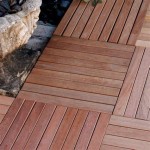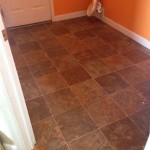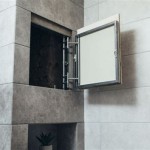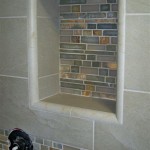How to Take Tiles Off Bathroom Wall Without Breaking Them
Removing tiles from a bathroom wall without damaging them is a meticulous process that demands patience, the right tools, and a thoughtful approach. The primary objective is to separate the tile from the underlying adhesive without applying excessive force that could lead to cracking or shattering. Reusing salvaged tiles can be beneficial for repairs, renovations aiming for a vintage aesthetic, or creative projects, making this technique a valuable skill for homeowners and contractors alike.
The success of this undertaking hinges on understanding the type of adhesive used, the condition of the grout, and the properties of the tiles themselves. Different adhesives respond differently to heat and solvents, and knowing which type was used can significantly impact the chosen removal method. Similarly, compromised grout can make the process more prone to tile breakage, while dense, well-adhered grout can pose a formidable challenge.
Preparing for Tile Removal
Before commencing the tile removal process, adequate preparation is crucial. This stage involves gathering the necessary tools, preparing the work area, and assessing the condition of the tiles and grout. A well-prepared workspace minimizes the risk of accidents and damage to surrounding fixtures. Thorough assessment allows for the selection of the most appropriate extraction method.
Essential tools for this project include a grout removal tool (manual or powered), a heat gun, a putty knife or thin pry bar, a hammer (for gentle tapping), safety glasses, gloves, and potentially a solvent suitable for dissolving tile adhesive. A grout removal tool efficiently clears the grout lines, while a heat gun softens the adhesive. The putty knife or pry bar is used to carefully separate the tile, and the hammer provides gentle assistance when needed. Safety glasses and gloves protect the eyes and hands from flying debris and potential irritants.
Preparing the area involves covering the floor with drop cloths to protect it from falling debris. Removal of any fixtures or accessories near the tiled area is also recommended to prevent damage. Adequate ventilation is paramount, especially if using solvents, to avoid inhaling harmful fumes. Turning off the water supply to the bathroom is a precautionary measure to prevent potential water damage during the process.
A close inspection of the tiles and grout lines is essential. Look for any cracks or existing damage to the tiles. Note the type and condition of the grout. Hard, dense grout might require more aggressive removal techniques, while crumbling grout may indicate a weaker bond and easier removal. Understanding these factors allows for a tailored approach, increasing the chances of extracting tiles intact.
Removing Grout Effectively
The initial stage of tile removal focuses on the complete removal of grout surrounding each tile. This step is crucial as the grout acts as a barrier preventing the tile from being cleanly separated from the wall. Incomplete grout removal increases the risk of tile breakage during the prying process.
Several methods can be employed for grout removal, each with its advantages and disadvantages. Manual grout saws are relatively inexpensive and offer precise control, allowing for careful removal around delicate tiles. However, they can be time-consuming for large areas. Powered grout removal tools, such as oscillating multi-tools with grout removal blades, offer faster grout removal but require a steady hand and careful operation to avoid damaging the surrounding tiles.
Chemical grout softeners can be used to loosen the grout before mechanical removal. These products are applied to the grout lines and allowed to sit for a specified period, softening the grout and making it easier to remove with a manual tool. However, it's crucial to choose a grout softener compatible with the tile material to avoid staining or damage.
Regardless of the chosen method, the goal is to remove all grout surrounding the tile, creating a clear separation between the tile and the adjacent surfaces. Take care to avoid chipping or scratching the tile edges during grout removal, as this can weaken the tile and make it more susceptible to breakage during removal.
Separating the Tile from the Wall
Once the grout has been completely removed, the next step involves carefully separating the tile from the underlying adhesive on the wall. This is often the most challenging part of the process, requiring a combination of heat, leverage, and patience. Applying heat to soften the adhesive is often beneficial, but caution is required to avoid overheating the tile or damaging the wall behind it.
A heat gun, set on a low to medium setting, is used to gently warm the tile and the surrounding adhesive. The heat gun should be moved constantly and evenly across the tile surface to avoid overheating any one area. Applying excessive heat can cause the tile to crack or the adhesive to melt excessively, making it more difficult to remove cleanly.
After warming the tile, carefully insert a putty knife or thin pry bar between the tile and the wall. Begin at one corner and gently work the tool around the edges of the tile, applying gentle pressure to break the adhesive bond. Avoid using excessive force, as this can easily crack the tile. Instead, focus on gradually working the tool deeper between the tile and the wall, gently loosening the adhesive.
If the tile proves difficult to remove, try gently tapping the putty knife or pry bar with a hammer to help break the adhesive bond. Be cautious not to strike the tile directly with the hammer, as this can cause it to crack. Instead, focus on tapping the tool to create vibrations that help loosen the adhesive. If necessary, reapply heat and repeat the process of gently prying and tapping until the tile begins to loosen.
As the tile loosens, continue working the tool around the edges until it is completely free from the wall. Once the tile is removed, carefully scrape off any remaining adhesive from the back of the tile and the wall surface. This helps ensure a clean surface for reinstallation or other future uses.
Different adhesives may require different approaches. For example, some adhesives respond well to solvents designed to dissolve them. Applying a solvent along the edges of the tile and allowing it to soak in can help weaken the adhesive bond. However, it's crucial to choose a solvent compatible with both the tile and the wall material to avoid damage or discoloration.
Certain types of tiles, such as those made from porous materials, may be more susceptible to damage during removal. In these cases, extra care and patience are required. Consider using a softer tool, such as a plastic scraper, to avoid scratching the tile surface. If possible, test the removal technique on a less visible tile first to get a feel for the process and identify any potential issues.
In situations where the tiles are particularly difficult to remove, steam can be a highly effective method. A steamer, typically used for cleaning, can be directed along the grout lines and around the edges of the tile. The steam penetrates the grout and adhesive, softening them and making it easier to pry the tile loose. This method is gentler than using a heat gun and is less likely to damage the tiles.
Ultimately, successful tile removal without breakage depends on a combination of careful preparation, appropriate tools, and a patient approach. By understanding the properties of the adhesive, the condition of the grout, and the limitations of the tiles themselves, it is possible to salvage tiles for reuse, preserving both materials and resources.

Easy Diy Guide On Removing Tiles From Walls Fantastic Handyman Au

How To Remove A Tile Backsplash Homeserve Usa

How To Remove Wall Tiles

The Best Way To Remove Old Shower Tile

How To Remove Wall Tiles 11 Steps With Pictures Wikihow

How To Remove Tile Without Breaking

How To Remove Wall Tiles Without Breaking Them

Preparing Walls For Tiling Removing Old Tiles Bathroom Guru

How To Remove Tile Without Breaking

How Do I Remove The Adhesive From 1950 S Pink Wall Tiles Bathroom Tile Removing
Related Posts








